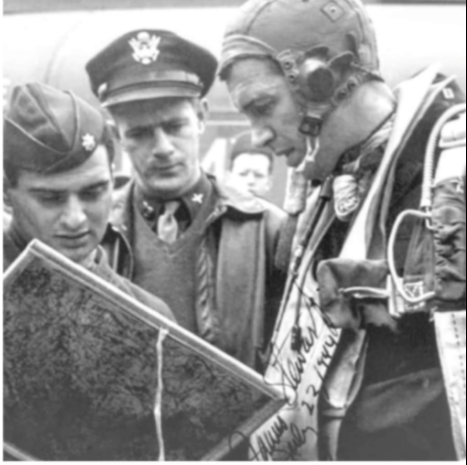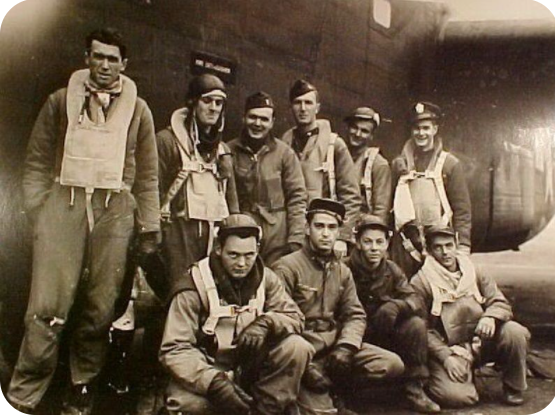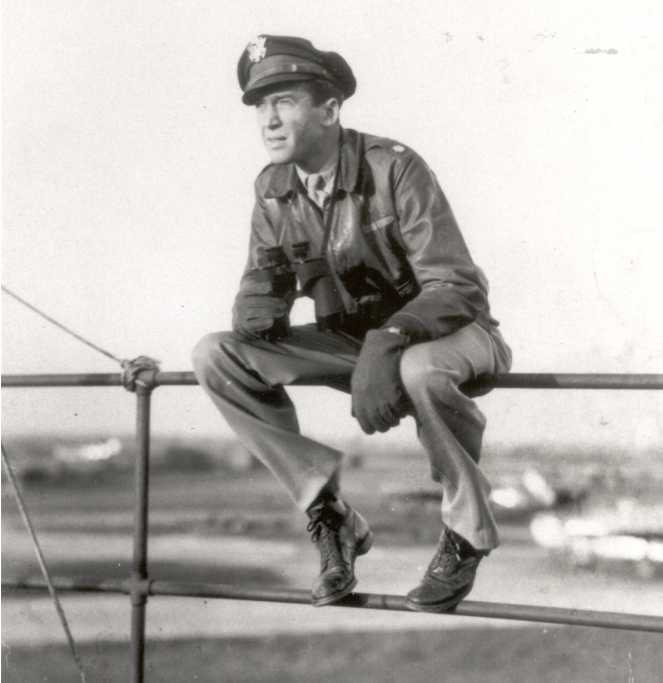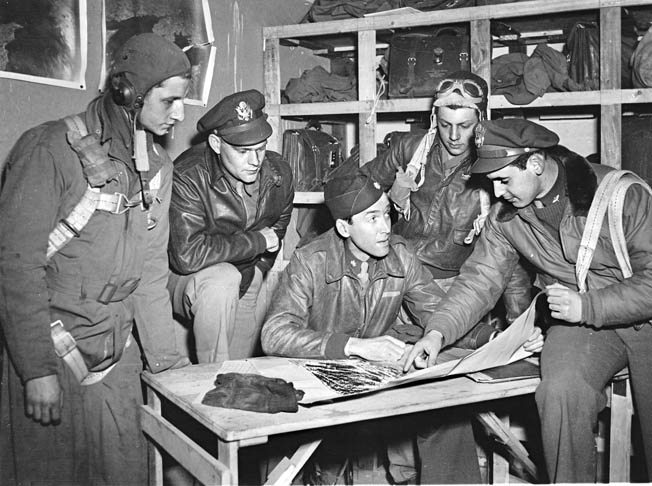In the 1950s to 70s almost everyone had a dad, uncle, or grandfather who was a WW-II veteran. There were over 16 million who served in WW-II, but only 165,000 who are living as of May 2023. We are losing approximately 234 a day. Within two years, there will be no more WW-II veterans for us to celebrate.
These men saved the world from tyranny then came home and went back to everyday life. Our memories of most of them are now lost in the recesses of time. I wonder how many people under 40 know anything about WW-II. Patriotism is not broadly celebrated today as the divide in America grows. Hollywood supported the war effort in the 1940s, but today takes a dim view of patriotism. There was a time when America and Hollywood were on the same side.
Hollywood was patriotic even before 07 December 1941 when Pearl Harbor was attacked and America was thrown into war. Actors, directors, and celebrities showed their patriotism by standing in line to sign up to defend America. Many showed their patriotism by making movies about winning the war and recruiting. However, a lot of well know Hollywood actors served in combat. Some of the more recognized were Eddie Albert (Navy, made multiple trips to the beach at Tarawa under fire rescuing 47 wounded Marines, awarded Bronze Star with Combat “V”), David Niven (British Army, signalman Normandy invasion), Mel Brooks (Army, combat engineer defused mines), Kirk Douglas (Navy, wounded by depth charge explosion awarded Purple Heart), Jason Robards (Navy, was on USS Northhampton when sunk by Japanese torpedoes), Paul Newman (Navy, rear gunner torpedo bomber), Charles Bronson (USAAF, B-29 gunner, awarded Purple Heart), Lee Marvin (Marines, awarded Purple Heart and Presidential Unit Citation), Ernest Borgnine (Navy, served 10 years made rank of Gunners Mate 1st class), James Arness (Army, wounded at Anzio awarded Bronze Star and Purple Heart). The list goes on and on. Actor Audie Murphy (Army, Medal of Honor and 28 other medals for valor) who Life magazine declared “most decorated soldier” returned from the war and became a Hollywood actor. He even played himself in the movie “To Hell and Back.” I’m not sure the youth of America today even know who these real-life “silver screen” hero’s are.
Actor Jimmy Stewart is an outstanding example of the Hollywood elite who served in WW-II. He entered the Army as a Private and rose to the rank of full Colonel in only four years, achieving the highest rank of any Hollywood actor while on active duty. He remained in the Air Force Reserve after the war achieving the rank of Brigadier General on 23 July 1959. He retired on 31 May 1968 as the highest-ranking actor who served in the military.
James Maitland Stewart was born on 30 May 1908. He initially became interested in airplanes when he was ten years old. When Lindberg crossed the Atlantic Stewart made a display depicting the flight and displayed it in the window of the family hardware store in Indiana Pennsylvania.
He graduated from Princeton in 1932 with a degree in architecture. As a member of the Triangle Club, Princeton’s celebrated drama club, he was fascinated with acting. Josh Logan who graduated from Princeton a year before Stewart had formed a group called University Players in Falmouth Massachusetts. He offered Stewart a job because he appreciated his acting skills in college. It was here that Stewart met Henry Fonda. The two of them built model airplanes in their off time while acting on Broadway. In June 1935, Stewart decided to go to Hollywood. He was encouraged by Fonda who was already there.
While working on his acting career Stewart began his dream of taking flying lessons at Minesfield (Clover Field) which eventually became Los Angeles International (LAX). Theatrical Agent Leland Hayward owned a Waco biplane. In 1937 he entered a race from Los Angeles to Cleveland and asked Stewart to be his copilot. They led the race until they experienced engine failure.
By 1940 Stewart was at the top of his movie career having starred in 18 movies. He was a very eligible Hollywood bachelor. The war in Europe was raging before Pearl Harbor. Stewart was an advocate of air power and convinced America would eventually be drawn into the war. James Stewart felt the call and wanted to join the Army but Louis B. Mayer did everything he could to block him. In late 1940, Stewart received his draft notice but was rejected because he was ten pounds underweight. He then volunteered and appealed the rejection. On 22 March 1941, after gaining enough weight, he was accepted. When Pearl Harbor was bombed on 07 December 1941 Stewart had already received his private and commercial licenses and had logged over 300 flying hours.
Stewart was sent to Moffett Field for pilot training. The instructors noted that he was very methodical and a competent airman. After receiving his wings and commission as 2nd Lieutenant. He wanted to begin combat training but because he was a famous actor, there was a lot of push-back. No commander wanted to accept the responsibility of sending a famous Hollywood movie star into combat and having to deal with the public repercussion if he were to be killed. America is fortunate he persevered and was assigned to the 8th Air Force in England.
Stewart was assigned to RAF Tibenham England as the operations officer of the 703rd Squadron of the 445th Bombardment Group. He was responsible for 400 men and 24 bombers. Captain Stewart led his squadron on the first bombing mission to the submarine base at Kiel, Germany. On his second mission, he led the entire 445th Group. He was known for his devotion to detail and planning. His men had faith in his ability to lead. His successes inspired more men to want to fly with him. When his men were deployed and he did not fly the mission, he remained at the control tower until each aircraft returned or was accounted for.
Stewart could have flown the easy missions, but he picked the most dangerous. On Christmas Eve 1943, the 445th target was the German rocket factory in Bonnieres, France. Stewart stood up at the briefing. He said, “We are going to fly at 12,000 feet. I—uh—know that is pretty low. We have to hit those targets today. I’m going to make this voluntary. That means anyone who doesn’t want to go on Christmas Eve does not have to go. You can just get up and walk out now. Nobody will hold it against you. I intend to go.”[1] No one left the room. Stewart looked over the room and said thanks, fellas. Under his leadership, the mission results were good and there were no losses.
On 07 January 1944, Major Stewart again demonstrated his bravery, respect for military authority, and flying skills while leading a group on a mission to Ludwigshafen, Germany. The B-24s left the target area in a two-group formation. Stewart discovered the group he was following was thirty degrees off course and headed for a hornet nest of German Messerschmitts. He tried to convince the other group leader to no avail. He could have broken away to protect the group he was leading. He knew the lost group ahead of him would be an easy target for the Luftwaffe. He opted to follow military protocol and go with the group headed for disaster. Near Paris sixty German fighters attacked. The off-course leader was the first to go down. Others in the group also perished. Stewart pulled his formation in close to fend off the Germans and brought all his men home safely. He was recognized for following the group commander despite the navigational error which he knew would result in disaster. Stewart was commended for….. “the splendid display of superb air discipline.”[2] He followed orders knowing the error would put his crews in peril.
During the ‘Big Week’ of February 20-26 Stewart flew the Gotha mission, was the group leader on the Nuremberg mission, and led the Wing to Brunswick. He received the Distinguished Flying Cross citation from General Doolittle for the Brunswick run. Upon reaching the target he assumed the lead position with great accuracy.[3]
There was talk that Stewart would no longer command the 703rd Squadron. He did not fly the Berlin missions in early March. The story got out that he had been ordered not to fly and would only be flying one in every five missions because he picked all the most dangerous. If it continued, the high command feared the worst. He was Wing Commander on the 22 March Berlin bombing mission. This same day crews were disappointed to learn he would be leaving the 445th to become Operations Officer at the 453rd at Attleborough (Old Buc). He had flown 12 missions with the 445th commanding the 703rd Bomb Group. Stewart was then assigned to the 453rd from 31 March to 01 July 1944.
Only four hours before the D-Day invasion Stewart was promoted to Lt. Colonel. On 05 June 1944 in the late evening, the briefings began for the four squadrons of B-24s of the 453rd Bomb Group. Each plane was loaded with fifty-two one-hundred-pound bombs. The squadrons were assigned a section of Omaha Beach for the bombing of Normandy with anti-personnel bombs. Take-off began at 03:30 am on 06 June. Lt. Colonel Stewart briefed all four missions and flew one of them. He kept the B-24s on a continual bombing mission for nine days taking out railroads and bridges.
Stewart’s leadership ability and passion for detail and planning did not go unnoticed. On 02 July 1944 Stewart was transferred to the Second Combat Wing Headquarters as General Timberlake’s Executive Officer. In post-war years General Doolittle stated in a book, “If the war had gone on another month, Jimmy would have become a group commander, which is the most important job in the Air Force……”[4]
Stewart was a patriot who proved to be a leader. His success was not because he was a famous actor. He was at the top of his career in 1939 when the war began in Europe. He was loved by the public, but he so believed in his patriotic duty he gave up fame to serve his country. The Army Air Force had great confidence in his leadership. The crews loved him because he planned so meticulously. He was promoted to full Colonel on 29 March 1945, which was less than a year from his last promotion. At 37 years old he had served as executive officer, operations officer, chief of staff, and wing commander. Although at this point his duties did require him to fly in combat, he was expected to plan and command. However, it was reported, he did on several occasions quietly slip off to Tibenham to fly on missions with the 453rd.
Jimmy Stewart was only overseas for 23 months. He flew as commander on twenty combat missions. His leadership, skill, and determination earned him the Distinguished Flying Cross with cluster, Air Medal with three clusters, six Battle Stars, and a French citation; Croix de Guerre.
As the war was ending wing commander Stewart was responsible for winding down the operation and bringing the men home. A wing commander is required to hold the rank of General. However, Stewart was a full Colonel yet performed with confidence and skill. The Second Combat Wing arrived in New York on the Queen Mary. It has been said that he was the first off and he greeted his men as they disembarked.
After he returned home his dad expected him to forget Hollywood and run the family business but that was not in his plans. Stewart made it clear he did not want any special attention. He said it would be difficult to adjust to civilian life. He did make it clear he was more interested in returning to acting than working at the family business. In September 1945 Stewart went to Andrews Field where he was relieved from active duty. He then accepted a commission as Colonel in the Air Force Reserves. In October he returned to Hollywood to restart his acting career. He made it clear he was not interested in making war films and would like to do comedy roles.
Prior to getting married in 1949, he had purchased a surplus P-51 Mustang which he entered into the Bendix Air Races. His pilot Joe DeBona won the race setting a new speed record. DeBona presented the trophy to Jimmy and Gloria before they left on their honeymoon.
In 1957 the Air Force began a campaign to have Stewart promoted to General. They thought it would be good for the national image to have such a legendary actor hold the rank of General. Senator Margaret Chase Smith vehemently opposed the promotion blocking it twice. She stated, “……. popularity should not be a yardstick by which we promote officers.” It appears she did not recognize his outstanding performance during WW-II. Eventually on 23 July 1959 Stewart was promoted to Brigadier General in the Air Force Reserves.
On 21 February 1966 Stewart, as part of the crew, flew his last combat mission on a B-52F 57-149. The aircraft was number two of a 30-aircraft mission that lasted for 12 hours and 50 minutes. The aircraft was commanded by Captain Bob Amos and co-pilot Captain Le Meyers.
The 453rd Bomb Group was inactivated after the war in September 1945. The 445th Bomb Group was converted to a troop carrier mission in 1957 becoming the 445th Troop Carrier Wing. It was headquartered at Dobbins AFB Georgia. The 453rd was no longer in existence when General Jimmy Stewart retired. It was only fitting for the ceremony to be conducted by his original unit the 445th which was now headquartered at Dobbins AFB Georgia.
I was fortunate enough to be assigned to Dobbins. On 31 May 1968 About 100 airmen were instructed to form up in the hangar where, in military trend, a flatbed trailer had been placed with full red, white, and blue Lincoln drape decoration; a podium, and appropriate flags. We were told that Brigadier General Jimmy Stewart would be retiring.
After a very impressive ceremony where he was awarded the Air Force Distinguished Medal and a motivating speech, Stewart closed and said, “I hope all you fellas will stay around for cake and ice cream.” As the refreshments were being served, he left the officers and came down from the podium. He began circulating among the Airmen. He took the time to shake hands and engage in conversation with every enlisted man present.
His time with the airmen that day validated the WW-II accounts of him as group commander in England waiting at the tower for his men to return from a mission and the story of welcoming each man off the Queen Mary when they returned home. His bravery in combat was not an embellished Hollywood story just because he was a famous actor. James Maitland Stewart was a patriot, a leader, and an American hero. “Some men are born great, some achieve greatness, and some have greatness thrust upon them.” -William Shakespeare-
If only Hollywood was on the same side as America today.
James Maitland Stewart passed away on 02 July 1979 in Beverly Hills, California at the age of 89.
Photos: USAF
[1] Starr Smith, Jimmy Stewart Bomber Pilot. (Minneapolis, MN; Zenith Press, 2005), 82.
[2] Ibid., 84-87.
[3] Ibid., 112-113.
[4] Ibid., 165.




Be the first to comment